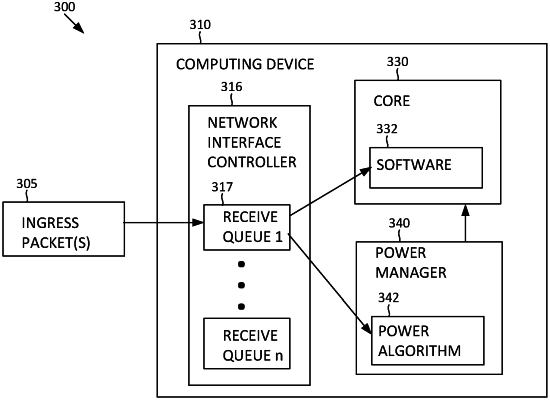| CPC G06F 1/3243 (2013.01) [G06F 1/3209 (2013.01); H04L 49/40 (2013.01); H04L 49/70 (2013.01); Y02D 10/00 (2018.01)] | 22 Claims |

|
1. An apparatus, comprising:
a central processing unit (CPU) core to be mapped to a queue of a network interface controller, wherein the CPU core comprises:
a memory to store instructions; and
a processor to execute the instructions to:
receive a descriptor from the network interface controller, w herein a designated field of the descriptor indicates a queue depth of the queue, and the queue depth is a number of outstanding received data packets that have not yet been processed by the CPU core;
read the designated field of the descriptor to determine the queue depth of the queue; and
send the queue depth to a power algorithm, w herein the power algorithm is to adjust a power state of the CPU core based on a comparison of the queue depth to first and second thresholds, execute at a power manager which is coupled to the CPU core, and provide a hysteresis to limit a frequency with which changes are made to the power state, wherein to provide the hysteresis, the power algorithm is to reduce the power state when the queue depth is below the first threshold and to increase the power state when the queue depth is above the second threshold, separate from the first threshold.
|